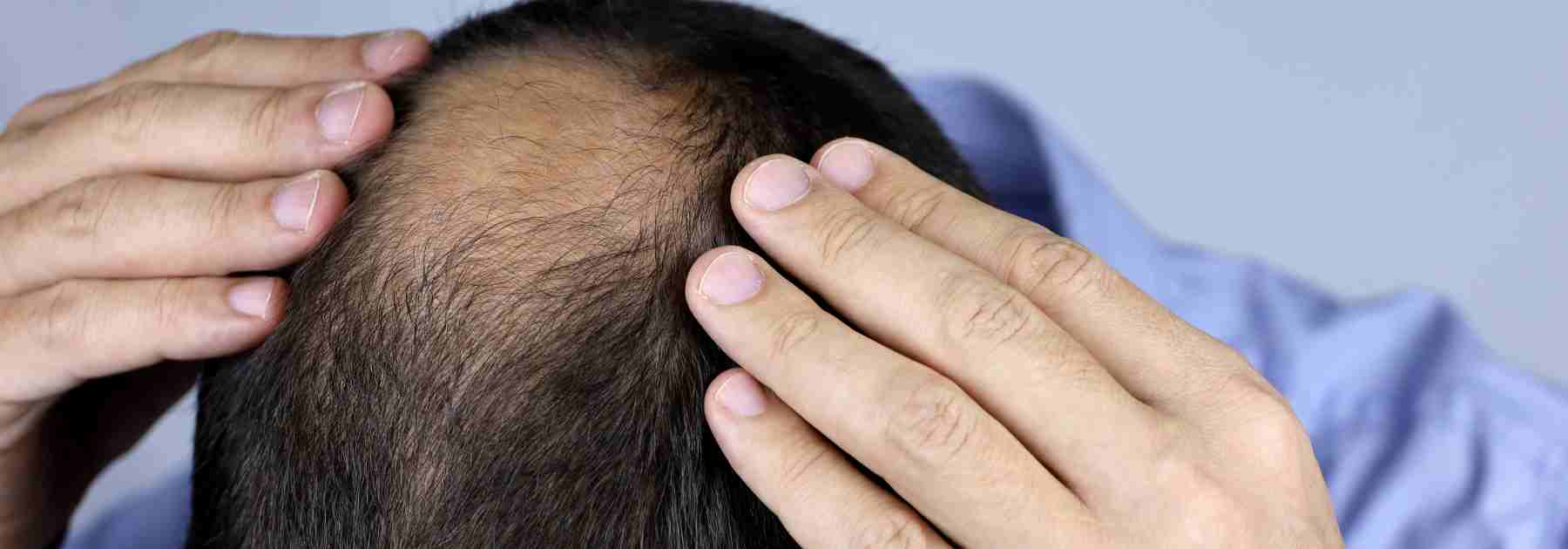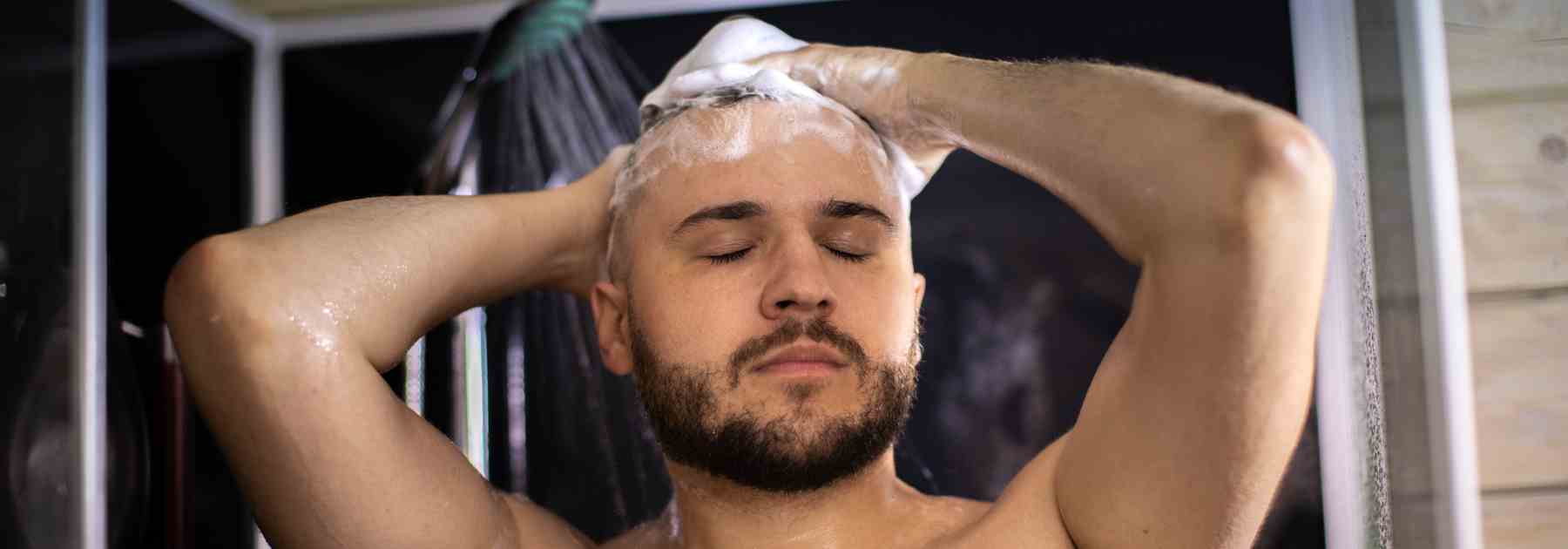Crown hair loss is one of the most common patterns of hair thinning, often linked to male pattern baldness (androgenetic alopecia). While it may start subtly, the progression can become more noticeable over time if left untreated. Understanding the typical rate of progression and knowing when to intervene can make a significant difference in maintaining your hair and confidence.
At onlinemeds, we help patients navigate the options available to slow or even reverse crown hair loss with effective treatments, including Regaine, Finasteride tablets, Propecia tablets, and Minoxidil solution. But first, let’s explore how quickly crown hair loss can progress and what happens when you don’t take action.
The Stages of Crown Hair Loss
Crown hair loss usually begins as a small, thinning patch at the top of the scalp – the vertex. It often goes unnoticed at first because it’s not visible from the front. However, over months or years, that patch can expand and eventually merge with a receding hairline, creating more widespread balding.
The Norwood scale is often used to describe the stages of male pattern baldness:
Stage 3 Vertex: Hair thinning begins at the crown.
Stage 4-5: The bald spot enlarges and may start to connect with the receding hairline.
Stage 6-7: Severe hair loss across the crown and front of the scalp.

How Fast Can Crown Hair Loss Progress?
There’s no exact timeline, as progression depends on genetics, hormone levels (especially DHT), lifestyle, and age. However, studies show that for men who start to lose hair in their 20s, significant progression can occur within 5–10 years if left untreated. In contrast, some may experience very slow hair loss over decades.
Key influencing factors include:
-
–> Family history of baldness
-
–> Testosterone and DHT sensitivity
-
–> Stress and lifestyle
-
–> Underlying health conditions such as diabetes or lupus
While you may initially lose only a small amount of hair, the condition tends to accelerate over time. By the time hair loss becomes visually significant, much of the follicular damage may be harder to reverse. That’s why early intervention is strongly recommended.
When Should You Intervene?
The earlier, the better. Treating crown hair loss in its early stages increases the likelihood of preserving existing hair and regrowing some of what’s been lost.
Look out for:
-
–> Thinning or lighter hair at the crown
-
–> Scalp becoming more visible under bright light
-
–> Friends or family commenting on hair changes you haven’t noticed
If you’re unsure, a pharmacist or clinician can help assess your condition via a simple consultation. At onlinemeds, we offer discreet online consultations to help you access the right treatment for your stage of hair loss.

Treatment Options: What Works Best?
If you’re ready to act, there are several evidence-based options that can slow, halt, or even reverse crown hair loss.
1. Finasteride Tablets (Generic)
Finasteride is a prescription-only oral tablet that works by lowering levels of dihydrotestosterone (DHT), the hormone responsible for shrinking hair follicles. Taken daily, finasteride has been shown to stop further hair loss in up to 90% of men and regrow hair in over 65%.
Pros:
-
–> Targets the root hormonal cause
-
–> Effective for crown hair loss
-
–> Easy to take once a day
Cons:
-
–> Requires a prescription
-
–> May cause side effects like reduced libido in a small number of users
2. Propecia Tablets
Propecia is the branded version of finasteride, containing the same active ingredient at the same dosage (1mg). It works identically but may be preferred by those who trust branded medications.
Pros:
-
–> Clinically tested and widely used
-
–> Brand name may offer additional confidence
Cons:
-
–> More expensive than generic finasteride
-
–> Same risk of side effects
3. Regaine (Minoxidil Foam)
Regaine is a non-prescription topical foam applied directly to the scalp. It increases blood flow to hair follicles and extends the hair growth phase. Regaine is particularly effective for crown hair loss and is available in strengths for men and women.
Pros:
-
–> Available over the counter
-
–> Easy to apply
-
–> Often used with finasteride for enhanced results
Cons:
-
–> Must be applied twice daily
-
–> Can cause temporary shedding during early use
-
–> Works only while consistently used
4. Minoxidil Solution
Similar to Regaine, this solution form of minoxidil is applied with a dropper. Some users prefer the solution for better scalp penetration, though it may leave more residue than foam.
Pros:
-
–> Budget-friendly alternative
-
–> Also increases blood supply to follicles
Cons:
-
–> Can be messy or oily
-
–> Requires twice-daily application
What’s the Best Approach?
For many men, combining finasteride and minoxidil gives the best chance of halting crown hair loss and encouraging regrowth. Finasteride tackles hormonal causes internally, while minoxidil improves follicle health externally.
If you’re just starting to notice thinning, starting with minoxidil (like Regaine) can be a good first step. However, for more noticeable or rapidly progressing hair loss, adding or starting with finasteride is often more effective.
At onlinemeds, we can help guide you through your options, with both prescription and over-the-counter treatments available and delivered discreetly to your door. Get in touch or book an appointment today:


With over eight years of experience in community, hospital, and online pharmacies, Gavin is a highly skilled Clinical Pharmacist and expert in UK pharmacy regulation. He has a deep understanding of medicines, compliance, and patient safety, ensuring onlinemeds operates to the highest standards while providing safe and accessible care.

